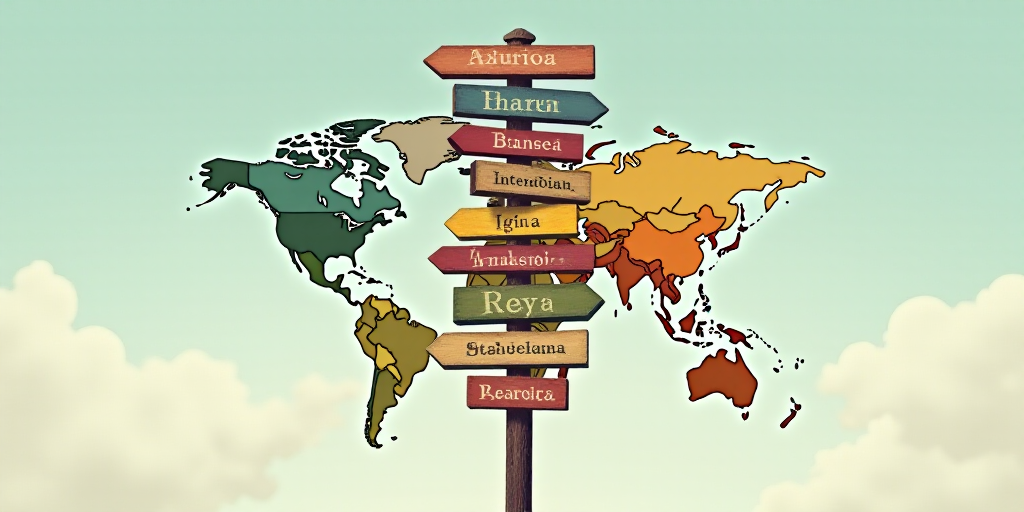Understanding the Recent U.S. Tariff Announcements
On April 2, the United States announced a series of “reciprocal” tariffs ranging from an additional 10% to up to 50% on imported goods. This tariff barrage by President Donald Trump, which spared no country, has been the most significant shake-up to the global trade system in at least a century, challenging key pillars of multilateralism and the rules-based international order.
A Broader Geopolitical Shift
These tariff measures are not merely about rebalancing trade; they are part of a broader geopolitical shift and the fragmentation of the global economy. The U.S.’s tariff assault is less a fleeting whim and more an attempt to reshape global economic and political forces. Although the most disruptive scenarios seem to have been avoided for now, the situation remains uncertain and exceptionally fluid.
A Double Strategy for America Latina and the Caribbean (ALC)
In light of this situation, the America Latina and the Caribbean (ALC) region should respond by adopting a double strategy that distinguishes between short-term stabilization and long-term transformation. This means that ALC governments must formulate a sensible and coherent response to U.S. tariff threats, avoiding reactive measures that could exacerbate uncertainty.
Short-term Stabilization
Maintaining macroeconomic stability, clear communication with markets, and strengthening institutional credibility are essential to ensure confidence. These steps are crucial in the short term.
Long-term Transformation
In the medium and long term, these countries should undertake structural change, including enhancing growth potential, boosting productivity, reducing inequality, and reinforcing institutions to escape development traps.
Impact on ALC Countries
The initial reciprocal tariffs were so alarming that many feared they could trigger a recession. However, if implemented, Trump’s “Liberation Day” tariffs could create opportunities for redirecting trade towards ALC countries, which received relatively light treatment—most at the minimum 10% tariff rate, except for Venezuela (15%), Nicaragua (18%), and Guyana (38%). Mexico was hit with a 25% tariff, though products meeting the U.S.-Mexico-Canada Agreement remained exempt. These lower rates increased the margin of preference for ALC exporters.
However, this relative advantage may not materialize—at least for now. The general 10% tariff imposed during the 90-day pause has leveled the playing field (except for China). Its direct impact on the ALC region will depend on each country’s reliance on trade with the U.S. According to Cepal calculations, around 80% of Mexico’s goods exports and between 30% and 60% of Central America and the Caribbean’s goods exports go to the U.S., making them particularly exposed. In contrast, South American countries export less than 18% of their products to the U.S., except for Ecuador (22%) and Colombia (32%). In broader terms, tariffs can weaken investment and job growth and exacerbate inflationary pressures.
Negotiations and Opportunities
Much will depend on ongoing tariff negotiations. Redirection of trade remains a possibility. For instance, Brazil and Argentina could expand their soybean exports to China, which has imposed retaliatory tariffs on the U.S., another significant soybean exporter.
Four Key Objectives for ALC
- Diversify Trade Partnerships: The current volatility incentivizes diversifying trade associations. ALC governments should forge alliances with blocs like the European Union and the Association of Southeast Asian Nations, as well as emerging economies like China and India.
- Deepen Economic Integration: In this critical juncture, the ALC region should realize its leaders’ solidarity rhetoric by deepening economic integration. This requires focusing on sharing technology, facilitating trade, harmonizing regulations, developing regional value chains, and creating logistical corridors.
- Implement Growth-Enhancing Policies: Different ALC countries should adopt policies that increase the rate of innovation and economic growth, as highlighted by recent Cepal reports.
- Strengthen Strategic Foresight: In the face of so much uncertainty, it’s crucial to bolster the region’s strategic foresight capability. This requires long-term strategies transcending political cycles, development planning across multiple scenarios, participatory policy design, and institutional agility.
The uncertainty surrounding the extent and duration of the new U.S. tariff regime persists, as do the broader economic and geopolitical ramifications of these erratic political movements.
In such a volatile environment, short-term prudence must go hand in hand with long-term ambition. This means mitigating immediate risks while simultaneously implementing forward-looking measures that strengthen commitment to change.
By focusing on diversification, integration, productive development, and strategic foresight, the ALC region can leverage this period of uncertainty to reposition itself in the emerging global order and accelerate its development.
About the Author
José Manuel Salazar-Xirinachs is the Executive Secretary of the United Nations Economic Commission for Latin America and the Caribbean (Cepal).
Copyright: Project Syndicate, 1995 – 2025
www.project-syndicate.org






